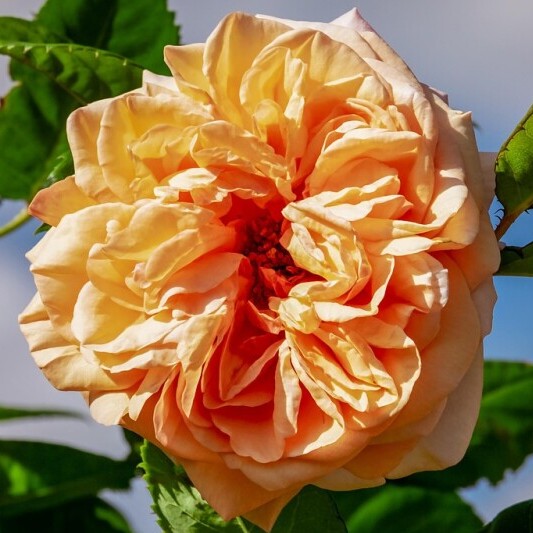
Fragrance notes are the unsung heroes of the perfume world. Think of them as the different sounds in a song that come together to create a melody. Each note has its own unique scent, but when layered just right, they form a harmonious aroma that’s the hallmark of a great perfume.
Much like how individual notes in music build up to a piece of symphony, fragrance notes work together to create the perfumes we love. This is especially true for niche perfumes, where creativity and artistry are pushed to the limits. Perfumers in the niche market play with unexpected combinations and high-quality ingredients to craft unique scents that aren’t just worn but experienced.
Understanding these notes can transform how you perceive and select perfumes. Knowing if you’re a lover of floral top notes or prefer a deep woody base can help you pick a scent that truly resonates with you. Niche perfumes often leverage this expertise to stand out, offering complex layers of scent that are luxurious, intimate, and personal.
As you explore the world of fragrances, pay attention to these scent profiles and how they develop over time. Unlocking the language of top, middle, and base notes will not only heighten your appreciation for your favorite scents but also guide you to new discoveries.
Breaking Down the Fragrance Pyramid: Understanding Its Layers
The fragrance pyramid is like a well-crafted story, where each chapter unveils a new, exciting turn that captures your senses. At its core, it’s all about layering scents to create a rich, multi-dimensional experience.
- Top notes are your opening lines, introducing the scent with a quick, memorable burst. These are light and volatile, often featuring fresh and citrusy hints like lemon or ginger. They grab your attention right off the bat but don’t stick around for long.
- As the top notes fade, the middle or ‘heart’ notes step in. This is where the perfume’s true character shines through. You’ll find floral and herbal tones here, like lavender, rose, or jasmine. These notes are more complex and laid back, lingering around longer than the top notes.
- Finally, we get to the base notes—the grand finale. These are the rich, deep swirls of vanilla, sandalwood, cedarwood, and more that form the scent’s backbone. Base notes take their time to unfold and can stick around for several hours, adding a sense of depth and permanence.
Understanding this pyramid helps you appreciate how a fragrance evolves from the moment you wear it until the last notes quietly drift away. Whether you’re pulling together a collection or picking out a new signature scent, knowing the role of each layer guides you in finding what truly speaks to you.
The Lifespan of Fragrance Notes: How Long Does It Last?

Understanding how long each fragrance note lasts can change how you choose and use perfumes. Let’s break it down so you can match scents to your lifestyle and occasions better.
- Top notes have the shortest lifespan, usually hanging around for about 5 to 15 minutes. They’re like a friendly hello—a quick introduction that sets the tone but doesn’t linger. If you’re gearing up for a quick meeting or a short outing, focus on these vibrant, fresh notes.
- Middle notes, or heart notes, stick around longer, from 20 minutes to an hour. They make up the main body of the scent. This stage is where the fragrance opens up into more layered and complex aromas. Think of it as the part of a film where the plot thickens.
- And then we have the base notes, which are in it for the long haul, lasting up to 6 hours or more. They’re the hearty end to your scent journey—a comforting reminder even as the day winds down. Heavier perfumes with pronounced base notes are perfect for long days or nights out.
Not every perfume sticks to these timelines, though; the concentration—whether it’s an eau de toilette or parfum—really matters. A higher concentration means a longer-lasting scent. So when choosing a perfume, consider what occasion or mood you’re aiming for and pick a scent with supporting notes that align with how long you need it to stay with you.
Exploring Diverse Fragrance Families: A Spectrum of Scents
Fragrance families categorize the wild and wonderful world of scents, each with its own unique vibe. Imagine these as the different genres in a music library, each appealing to different moods and moments.
- Floral fragrances are like a walk through a blooming garden, capturing the essence of flowers like jasmine and rose. If you’re drawn to a touch of romance or something classic, floral notes are your go-to. They exude femininity and elegance, perfect for a soft, gentle aura.
- Woody fragrances bring you down to earth. Think of the deep, rich whispers of sandalwood and cedar. These scents are grounding and calming, reminiscent of peaceful forests and a sense of adventure, making them ideal for stepping into nature or creating a cozy vibe.
- Then, there are citrus notes, bringing all the zest and zing with them. The brightness of bergamot and lemon offers an energizing burst of freshness, great for mornings or when you just need that extra spark to get moving.
- Ambery or oriental scents dive into the exotic and sensual. They’re about warmth and richness, often with spicy or musky undertones. Think about those evenings when you want to feel wrapped in something luxurious and intriguing.
- Gourmand fragrances are the sweet tooth’s delight. Inspired by desserts, these notes are indulgent and, dare I say, delicious. Picture the aroma of vanilla or caramel for a cozy, comforting aura that’s as inviting as a warm kitchen.
A Closer Look at Popular Fragrance Notes: Crafting Unique Appeals

When digging into what makes fragrances tick, some notes pop up time and again, each bringing its own charm to the scene. Vanilla, for instance, is a sweet embrace in a bottle. It’s warm, comforting, and adds a creamy smoothness that can both calm and allure. Vanilla’s often the secret ingredient in those addictive scents you can’t quite put down.
Bergamot is another superstar in the fragrance world. This citrus note brings a vibrant, zesty kick to any perfume, often appearing in top notes for that initial fresh hit. It has the magical ability to instantly uplift your spirits and give a fresh burst of energy, making it a popular choice for those invigorating morning sprays.
Woody notes like cedarwood and sandalwood ground fragrances with their earthy warmth, calling to mind the serene embrace of nature’s forests. These notes hang out in the base and sometimes the middle notes, giving a fragrance its depth and longevity. They’re the ones you’ll smell long after the other notes have danced away.
These popular notes aren’t just standalone stars; they play well with others in the niche perfume scene, combining to create those unforgettable blends. When selecting a new scent, think about which notes resonate with you personally. Vanilla for sweetness, bergamot for a fresh pop, or woody notes if you’re after something deep and soulful.
Mastery comes when each of these elements finds its place in a fragrance, balancing uniqueness with familiar appeal. By appreciating these individual notes, you’ll not only choose perfumes that truly match your style but also heighten the olfactory story each one tells.


